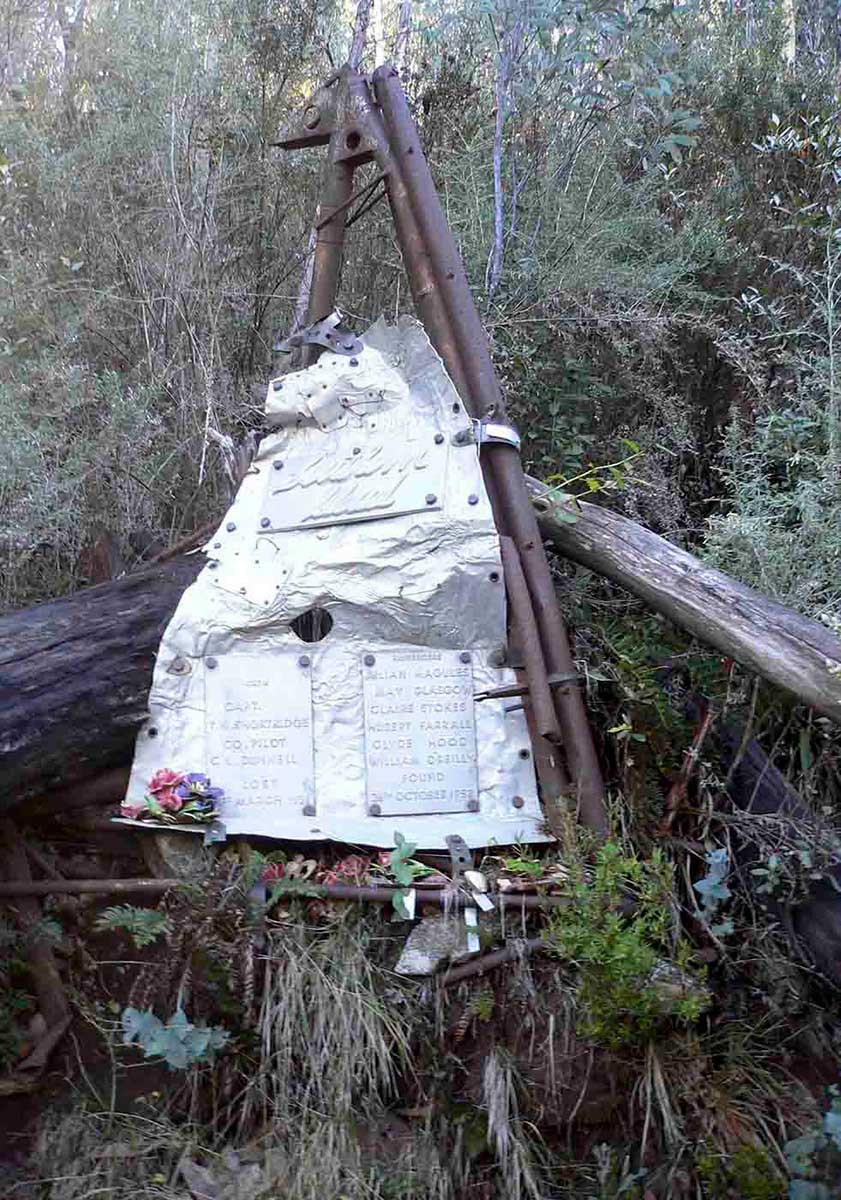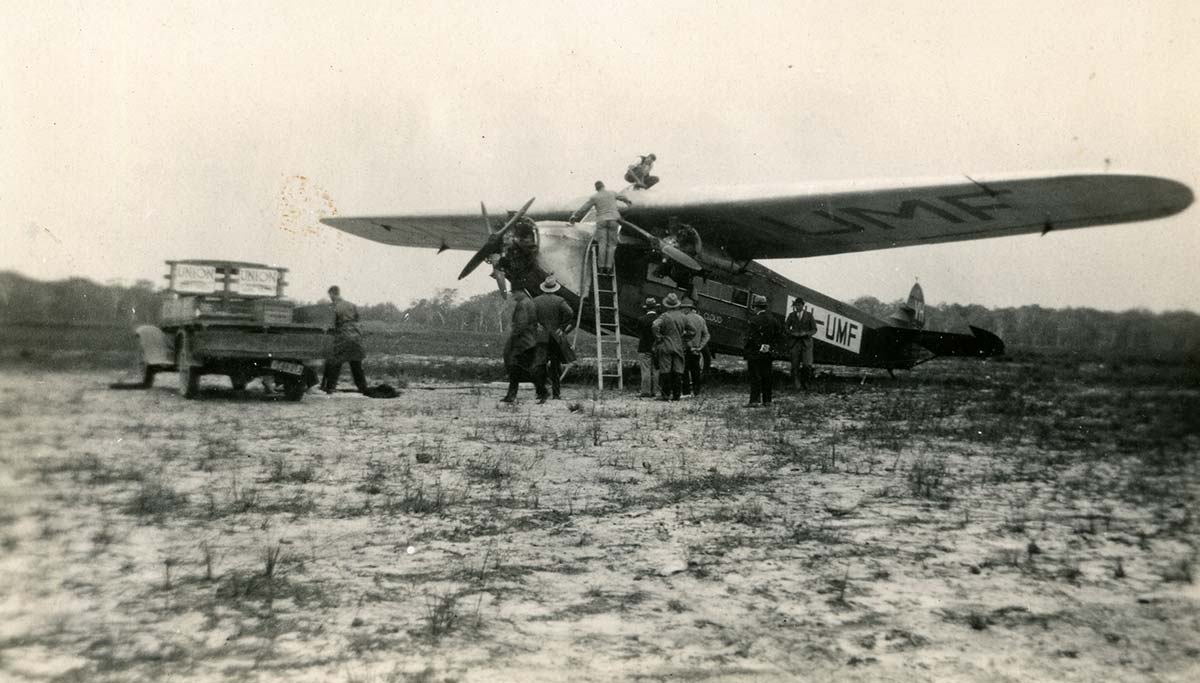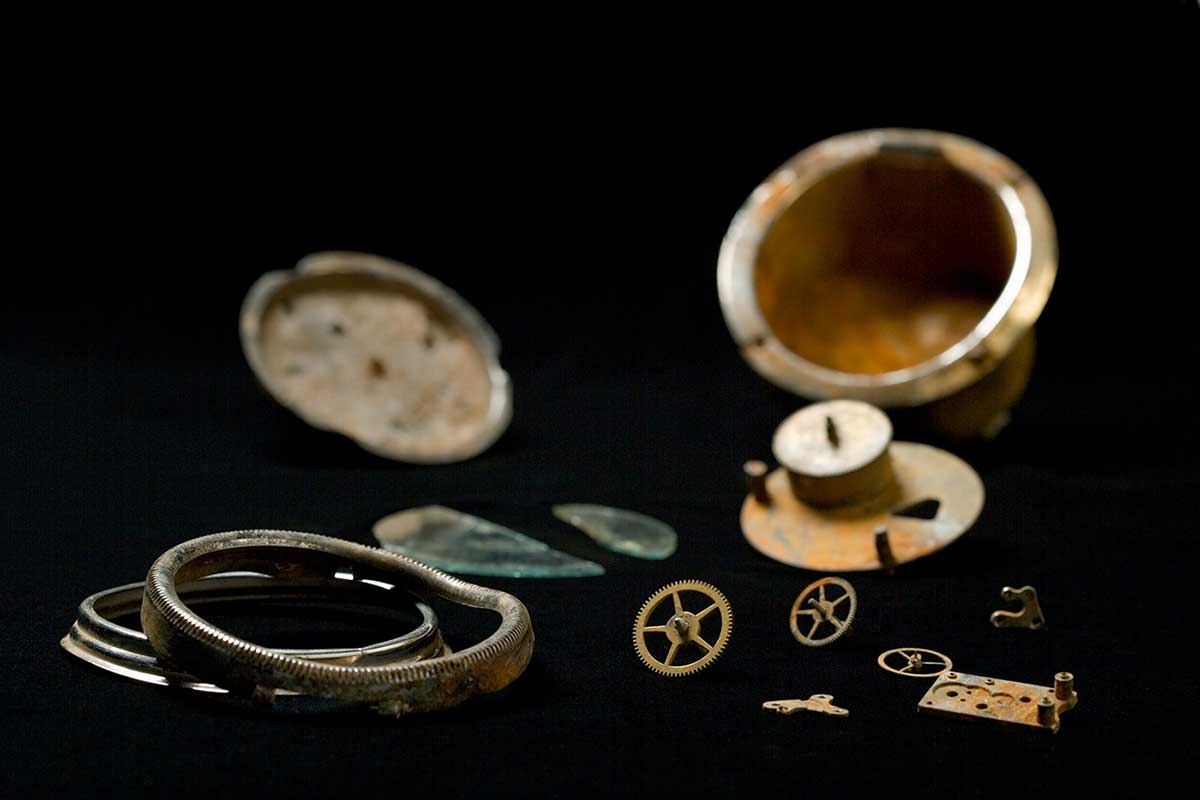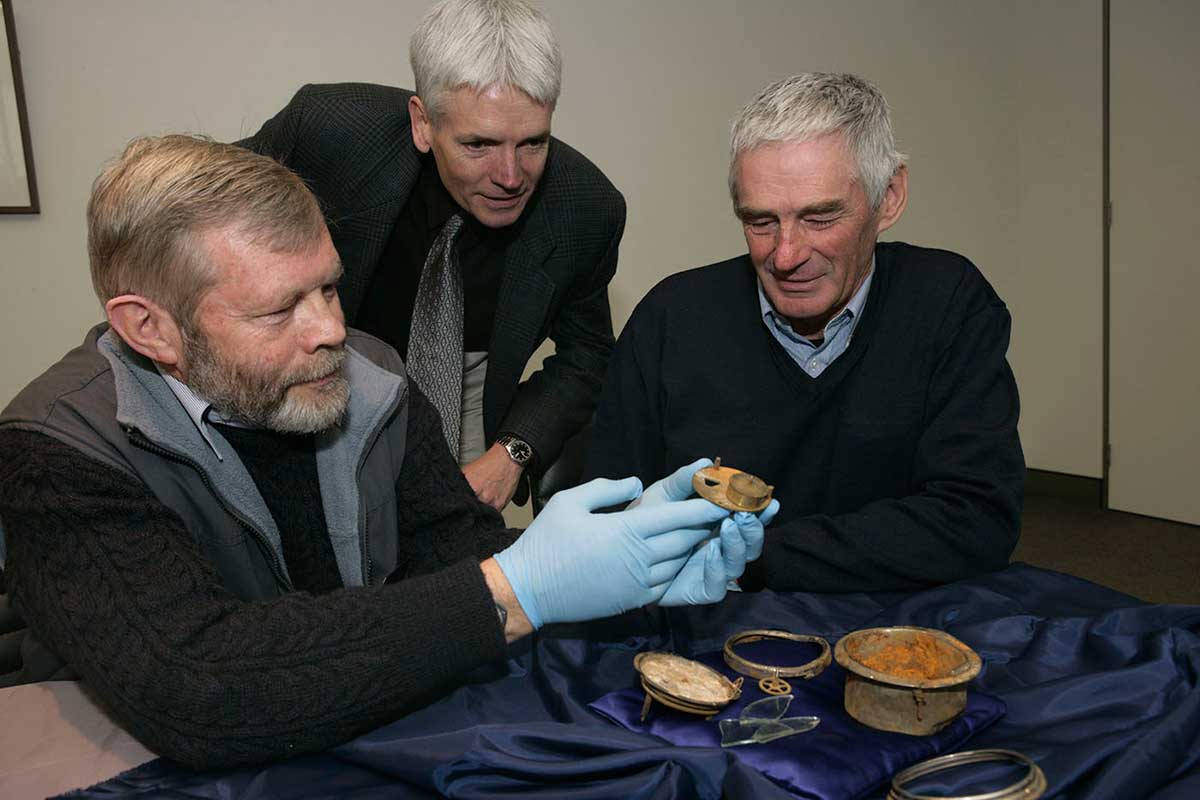A wrecked clock from the Southern Cloud, which disappeared during bad weather on a Sydney to Melbourne flight in 1931, is part of the National Museum of Australia's collection.
Eight lives were lost in the crash, which was Australia's first major civil air disaster. After the Southern Cloud crash, it was recommended that radios be installed in all regular passenger planes, so weather forecasts could be conveyed to pilots while they were in the air.

Kingsford Smith and Ulm
An initial search for the Southern Cloud failed to find the plane. Its mysterious disappearance and the loss of the eight people on board captured the nation's attention.
Southern Cloud was one of five Avro X aircraft operated by Australian National Airways. The company was founded in 1929 by aviation pioneers Charles Kingsford Smith and Charles Ulm.
The aircraft wreckage was found by accident more than 20 years later. A worker on the Snowy Mountains Hydro-Electric Scheme discovered the plane near Deep Creek in 1958. Within days hundreds of people visited the site, many collecting souvenirs.
A five-shilling school yard sale resulted in the National Museum acquiring the clock. John Boddington of Dalton, near Goulburn, bought the battered clock components in 1958 from a classmate at Canberra Grammar School, Alan Reid.
Alan's father was the former Canberra political journalist Alan Reid. Alan junior visited the site with his father and souvenired the clock from the aircraft's instrument panel.
More than 75 years after the plane went down, John donated the clock to the National Museum in Canberra.
Remembering Southern Cloud
The Southern Cloud story was remembered on the 50th anniversary of the crash in October 2008.
At events organised by the Tumbarumba Historical Society and Tumbarumba Shire Council, over 100 people, including large numbers of descendants of the people killed in the crash, attended various events in Tumbarumba and at the newly opened memorial lookout south of the town.
Then, with added assistance from Snowy Hydro and the New South Wales National Parks and Wildlife Service, a large contingent visited the crash site in the rugged and wild upper reaches of the Tooma River valley. At the centre of the activities was Tom Sonter, the Snowy Scheme worker who had chanced upon the wreckage exactly 50 years before.
18 Jul 2013
Joy flights, feats and disasters: A journey through 1920s and 1930s aviation in the National Historical Collection
In our collection


